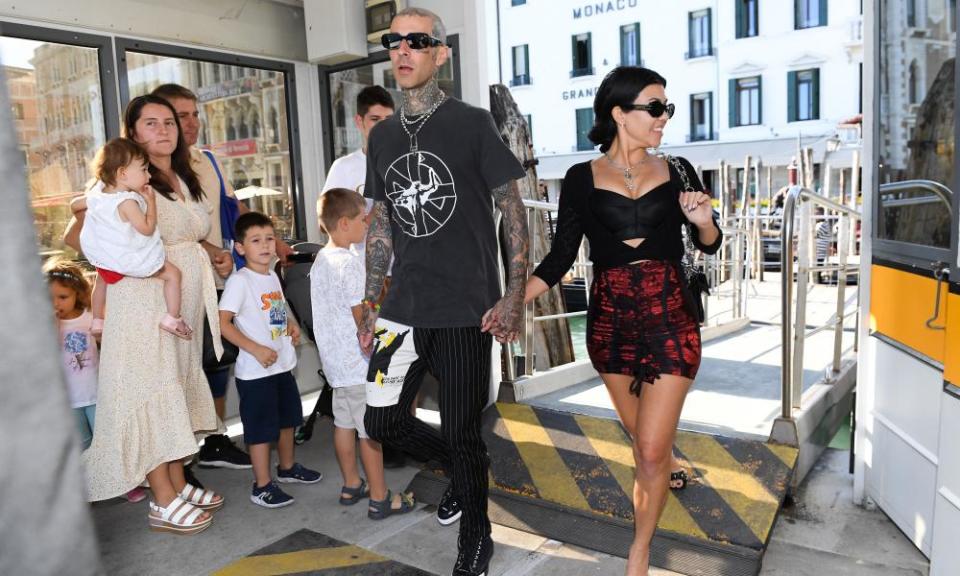Mourning suit: the return of goth fashion

Release the bats: goth style has returned.
This week, Kourtney Kardashian visited Venice with her boyfriend, Blink-182’s Travis Barker, trading in Balmain bodycon for black leather trousers from Rick Owens and studded mules from Givenchy. Selena Gomez appeared on the cover of Elle US with fishnet tights, a choker and blonde bob – more Courtney Love than Marilyn Monroe. While singer Halsey has accompanied her new album (made with goth legend Nine Inch Nail’s Trent Reznor) with mournful black, vintage Dolce and Gabbana.
“Goth signals danger. It disrupts, but not too much,” says ProfCatherine Spooner of Lancaster University. “Flirting with goth is a perfect way for celebrities safely to give their identity an edge.”
The subculture has been trending recently, hair horns and platform heels are popular, while searches for “goth fashion” have increased by 21% year on year, according to jewellerybox.
“There days there’s more fluidity to the look as opposed to it being a set style,” says Daisy Davidson, who runs Hysteric Fashion, a street style page documenting alternative fashion. “It often seems to be a mix of goth and emo, as opposed to one standalone scene like it was in the 80s.”
Other believe the darkness of goth is an appropriate response to Covid-19.
“Many features of gothic narrative such as haunting, monstrosity and the undead are very easily read as social and political metaphors,” Spooner says. “Coming out of the pandemic may be likened to rising again, returning to life after tomb-life incarceration,” says Prof Nick Groom, the co-author of CoronaGothic: Cultures of the Pandemic.
Spooner also sees the rise of goth as a counternarrative to cottagecore and the “back to the country” aesthetic. “In gothic fiction and film, the country is rarely a place for rest and relaxation – it’s where dark things happen to unwary city-dwellers,” she says. “And that evokes the fact that in western countries the countryside is where some of our most difficult politics are currently playing out, from climate change to rural conservatism.”
For Spooner, the trend, by its very nature, is cyclical. “Goth is intrinsically tied up with the past returning,” she says. “It’s rooted in cultural ideas of historical revival, uncanny returns and haunting. This is the latest iteration of the cycle and it won’t be the last.”

